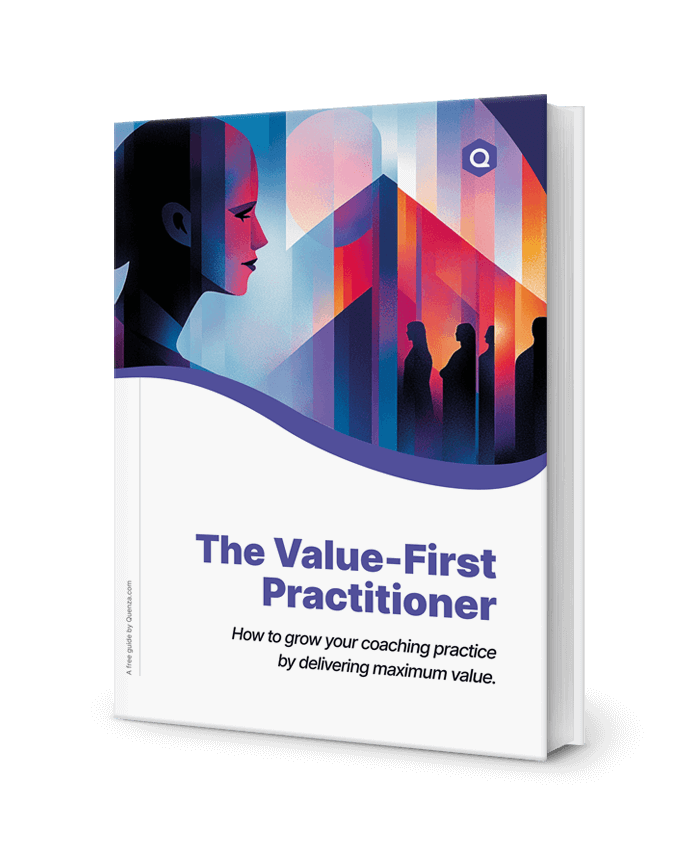Insomnia is a common sleep disorder that can significantly affect an individual’s overall well-being and quality of life. It is characterized by difficulty falling asleep, staying asleep, or experiencing non-restorative sleep, despite having adequate opportunities for rest [1]. While occasional sleepless nights are normal, chronic insomnia can have far-reaching consequences on both physical and mental health.
The causes of insomnia are diverse and can include stress, anxiety, depression, medical conditions, medications, and lifestyle factors. Some individuals may experience acute insomnia, which lasts for a short period, while others struggle with chronic insomnia that persists for months or even years. Regardless of its duration, insomnia can lead to daytime fatigue, mood disturbances, impaired cognitive function, and reduced productivity [2].
Given the prevalence and impact of insomnia, it’s crucial to explore effective treatment options. While traditional approaches like sleep hygiene education and cognitive-behavioral therapy for insomnia (CBT-I) have shown promise, many individuals are seeking complementary and alternative methods to improve their sleep. One such approach that has gained attention in recent years is Emotional Freedom Techniques (EFT), also known as tapping.
Introduction to EFT for Better Sleep
Emotional Freedom Techniques (EFT) is a mind-body approach that combines elements of cognitive therapy, exposure therapy, and acupressure. Developed by Gary Craig in the 1990s, EFT is based on the premise that negative emotions and physical symptoms are linked to disruptions in the body’s energy system [3].
Here’s a new section with the YouTube video and description, which you can insert between other sections:
CBT-I: An Evidence-Based Treatment for Insomnia
Chronic insomnia is often the result of an unintentional bad habit – staying in bed while awake. This seemingly innocent behavior can actually train your brain to associate your bed with wakefulness rather than sleep. Cognitive Behavioral Therapy for Insomnia (CBT-I) addresses this issue head-on, offering an evidence-based approach to treating insomnia that has shown remarkable effectiveness. Studies have demonstrated that CBT-I can be up to 80% effective in alleviating insomnia symptoms. By targeting the behaviors and thought patterns that perpetuate sleep problems, CBT-I helps retrain the brain to associate the bed with restful sleep, ultimately leading to faster and more consistent sleep onset.
| Technique | Pros | Cons |
|---|---|---|
| EFT (Emotional Freedom Techniques) |
|
|
| CBT-I (Cognitive Behavioral Therapy for Insomnia) |
|
|
| Sleep Medication |
|
|
The Basics of EFT
EFT involves gently tapping on specific acupressure points on the face and body while focusing on a particular issue or emotion. This combination of physical stimulation and mental focus is believed to help balance the body’s energy system and alleviate emotional distress. The basic EFT process includes the following steps:
- Identify the issue: In this case, the focus would be on sleep difficulties.
- Rate the intensity: Assess how much the problem bothers you on a scale of 0-10.
- Create a setup statement: Combine the issue with a self-acceptance phrase, such as “Even though I have trouble falling asleep, I deeply and completely accept myself.”
- Perform the tapping sequence: While repeating a reminder phrase, tap on specific points on the body.
- Reassess the intensity: After completing the sequence, rate the intensity again to gauge progress.
How EFT Can Help with Insomnia
EFT may be beneficial for addressing insomnia in several ways:
- Stress reduction: By tapping on acupressure points, EFT can help activate the body’s relaxation response, reducing overall stress and anxiety that may contribute to sleep difficulties [4].
- Addressing underlying emotions: EFT allows individuals to explore and process emotions that may be interfering with sleep, such as worry, fear, or frustration.
- Breaking negative thought patterns: The cognitive component of EFT can help challenge and reframe unhelpful beliefs about sleep, promoting a more positive mindset.
- Promoting relaxation: The rhythmic tapping and focus on self-acceptance can induce a state of calm, making it easier to transition into sleep.
- Enhancing sleep hygiene: EFT can be incorporated into a bedtime routine, signaling to the body that it’s time to wind down and prepare for sleep.
EFT Techniques for Better Sleep
When using EFT to improve sleep, it’s essential to tailor the approach to address specific sleep-related concerns. Here are some techniques that can be particularly helpful:
Identifying and Addressing Underlying Emotions
Often, sleep difficulties are rooted in unresolved emotional issues. To use EFT effectively for insomnia, start by exploring the emotions that surface when you think about your sleep problems. Common emotions might include:
- Frustration with inability to fall asleep
- Anxiety about the consequences of poor sleep
- Anger at feeling out of control
- Sadness or depression related to chronic fatigue
Once you’ve identified these emotions, create specific EFT statements to address them. For example:
“Even though I feel frustrated when I can’t fall asleep, I choose to relax and allow sleep to come naturally.”
“Even though I’m anxious about how lack of sleep will affect my day, I deeply and completely accept myself and trust that my body knows how to rest.”
Releasing Stress and Anxiety
Stress and anxiety are major contributors to insomnia. Using EFT to target these feelings can be particularly effective. Here’s a sample tapping sequence to release bedtime stress:
- Start by tapping on the karate chop point while saying: “Even though I feel stressed and wound up at bedtime, I choose to relax and let go.”
- Tap through the following points, repeating a reminder phrase at each:
- Eyebrow: “This bedtime stress”
- Side of the eye: “Feeling wound up”
- Under the eye: “Can’t seem to relax”
- Under the nose: “All this tension”
- Chin: “Stress in my body”
- Collarbone: “Releasing this stress”
- Under the arm: “Letting go of tension”
- Top of the head: “Choosing to relax now”
- Take a deep breath and reassess your stress levels. Repeat the sequence if needed.
Cultivating Relaxation and Calm
In addition to addressing negative emotions, EFT can be used to actively cultivate feelings of relaxation and calm. This approach can be particularly helpful when practiced as part of a bedtime routine. Try this sequence:
- Begin with the setup statement: “Even though part of me feels alert and awake, I choose to allow my body and mind to relax deeply.”
- Tap through the points with these reminder phrases:
- Eyebrow: “Allowing relaxation”
- Side of the eye: “Letting go of the day”
- Under the eye: “Feeling calm and peaceful”
- Under the nose: “My body knows how to relax”
- Chin: “Releasing any remaining tension”
- Collarbone: “Inviting deep rest”
- Under the arm: “It’s safe to relax completely”
- Top of the head: “Welcoming restful sleep”
Remember to adapt these sequences to your personal experiences and preferences. The key is to be specific about your concerns and to use language that resonates with you.
Implementing EFT for Better Sleep: A Step-by-Step Guide
To make the most of EFT for improving sleep, it’s helpful to have a structured approach. Here’s a step-by-step guide to implementing EFT as part of your bedtime routine:
1. Create a Bedtime EFT Routine
Consistency is key when it comes to improving sleep. Set aside 10-15 minutes before bed each night for your EFT practice. Find a quiet, comfortable space where you won’t be disturbed. This could be in bed, but it’s often helpful to do your tapping routine in a different space to mentally separate the practice from sleep itself.
2. Assess Your Current State
Before beginning your tapping sequence, take a moment to check in with yourself. Notice any physical sensations, emotions, or thoughts that are present. Rate your overall level of stress or anxiety on a scale of 0-10. This will help you track your progress and tailor your tapping to your current needs.
3. Start with a General Setup Statement
Begin with a setup statement that acknowledges your current state and sets an intention for relaxation. For example:
“Even though I’m feeling [stressed/anxious/restless] right now, I choose to relax and prepare for restful sleep.”
Repeat this statement three times while tapping on the karate chop point.
4. Perform a Full Tapping Sequence
Move through all the tapping points, spending about 5-7 seconds on each point. As you tap, use reminder phrases that relate to your current state and your desire for better sleep. For example:
- Eyebrow: “This tension I’m feeling”
- Side of the eye: “Worried about falling asleep”
- Under the eye: “Afraid I’ll be tired tomorrow”
- Under the nose: “Letting go of these concerns”
- Chin: “Allowing my body to relax”
- Collarbone: “Giving myself permission to rest”
- Under the arm: “Releasing any remaining stress”
- Top of the head: “Open to experiencing deep, restful sleep”
5. Take a Deep Breath and Reassess
After completing the sequence, take a deep breath and reassess your stress or anxiety levels. If there’s been a significant reduction, you might choose to end your session here. If you still feel tense or anxious, perform another round of tapping, focusing on any remaining issues.
6. End with Positive Affirmations
Conclude your EFT session with some positive affirmations about sleep. Tap gently on the heart center (in the middle of the chest) while repeating statements such as:
- “I trust in my body’s natural ability to sleep.”
- “I release the day and welcome restful sleep.”
- “I wake up feeling refreshed and energized.”
7. Transition to Sleep
After completing your EFT routine, transition to sleep in a way that feels natural to you. This might involve some gentle stretching, reading a few pages of a book, or simply lying down and focusing on your breath.
| Common Sleep Concerns | EFT Tapping Phrases |
|---|---|
| Racing thoughts | “Even though my mind won’t stop racing, I choose to let go and relax.” |
| Physical tension | “Even though my body feels tense, I allow it to soften and prepare for sleep.” |
| Worry about the next day | “Even though I’m worried about tomorrow, I trust that rest will help me handle whatever comes.” |
| Frustration with insomnia | “Even though I’m frustrated with my sleep problems, I’m open to positive change.” |
Remember, consistency is key when using EFT for sleep improvement. It may take some time to see significant results, so be patient with yourself and the process.
Combining EFT with Other Sleep Hygiene Practices
While EFT can be a powerful tool for improving sleep, it’s most effective when used in conjunction with other good sleep hygiene practices. Here are some ways to integrate EFT into a comprehensive approach to better sleep:
Establish a Consistent Sleep Schedule
Going to bed and waking up at the same time every day helps regulate your body’s internal clock. Use EFT to address any resistance or anxiety you might feel about maintaining a consistent schedule. For example, you might tap on:
“Even though it’s hard for me to stick to a regular sleep schedule, I’m committed to supporting my body’s natural rhythms.”
Create a Relaxing Bedtime Routine
In addition to your EFT practice, incorporate other relaxing activities into your bedtime routine. This might include gentle stretching, reading, or listening to calming music. Use EFT to enhance the relaxation effects of these activities. For instance, you could tap while affirming:
“I’m allowing each part of my bedtime routine to signal to my body that it’s time to rest.”
Optimize Your Sleep Environment
Ensure your bedroom is conducive to sleep by keeping it dark, quiet, and cool. If you’re having trouble with environmental factors, use EFT to address these concerns. A tapping sequence might start with:
“Even though I’m bothered by [noise/light/temperature] in my bedroom, I’m finding ways to create a peaceful sleep environment.”
Limit Screen Time Before Bed
The blue light emitted by electronic devices can interfere with your body’s production of melatonin, the sleep hormone. If you struggle with limiting screen time, use EFT to work through any underlying issues. You might tap on:
“Even though I feel compelled to check my phone before bed, I choose to prioritize my sleep and well-being.”
Manage Caffeine and Alcohol Intake
Both caffeine and alcohol can disrupt sleep patterns. If you find it challenging to modify your consumption habits, EFT can help address the emotional aspects of these behaviors. A tapping sequence could begin with:
“Even though I rely on [caffeine/alcohol] to [energize/relax] me, I’m open to finding healthier ways to support my energy and relaxation.”
By combining EFT with these sleep hygiene practices, you create a holistic approach to improving your sleep quality. This integrated method addresses both the physical and emotional aspects of sleep, increasing your chances of overcoming insomnia and achieving restful nights.
Integrating EFT into Your Bedtime Routine
One of the most effective ways to combine EFT with good sleep hygiene is to incorporate it into a structured bedtime routine. A well-designed routine signals to your body that it’s time to wind down and prepare for sleep. By including EFT in this routine, you can address any lingering stress or anxiety that might interfere with your ability to fall asleep.
Here’s an example of how you might structure an ideal bedtime routine that incorporates EFT:
Ideal Bedtime Routine with EFT
- 2 hours before bed: Stop consuming caffeine and heavy meals
- 1 hour before bed: Turn off electronic devices
- 45 minutes before bed: Start EFT session to address any anxieties or stress
- 30 minutes before bed: Take a warm bath or shower
- 15 minutes before bed: Practice relaxation techniques (deep breathing, meditation)
- Bedtime: Final quick EFT round if needed, then lights out
Working with an EFT Practitioner for Sleep Issues
While many people find success using EFT on their own, working with a trained EFT practitioner can provide additional benefits, especially when dealing with persistent sleep issues. Here are some reasons to consider professional guidance:
Expertise in Identifying Root Causes
Experienced EFT practitioners are skilled at uncovering the deeper emotional issues that may be contributing to your sleep problems. They can help you identify patterns or beliefs that you might not recognize on your own.
Personalized Approach
A practitioner can tailor the EFT process to your specific needs and experiences. They can guide you through more complex tapping sequences and help you address multiple aspects of your sleep issues in a structured way.
Emotional Support
Dealing with chronic insomnia can be frustrating and emotionally draining. An EFT practitioner can offer support and encouragement throughout your journey to better sleep.
Accountability and Consistency
Regular sessions with a practitioner can help you maintain consistency in your EFT practice, which is crucial for seeing long-term improvements in sleep quality.
When choosing an EFT practitioner, look for someone who has specific experience in addressing sleep issues. You may also want to consider practitioners who have additional qualifications in fields such as psychology, counseling, or sleep medicine.
Measuring Progress and Adjusting Your Approach
As you incorporate EFT into your sleep improvement strategy, it’s important to track your progress and make adjustments as needed. Here are some ways to measure the effectiveness of your EFT practice:
Keep a Sleep Journal
Maintain a daily log of your sleep patterns, including:
- Time you go to bed and wake up
- How long it takes you to fall asleep
- Number and duration of nighttime awakenings
- Overall sleep quality rating
Also note any EFT sessions you did and how you felt before and after.
Use Sleep Tracking Technology
Wearable devices and smartphone apps can provide detailed data about your sleep cycles and overall sleep quality. While these shouldn’t be relied upon exclusively, they can offer useful insights when combined with your subjective experience [5].
Regular Self-Assessment
Periodically assess your overall sleep satisfaction and daytime energy levels. Are you feeling more rested? Has your mood improved? Are you more productive during the day?
Adjust Your EFT Approach
Based on your observations, you may need to modify your EFT practice. This could involve:
- Changing the focus of your tapping sequences
- Increasing or decreasing the frequency of your EFT sessions
- Exploring different times of day for your practice
- Addressing new emotional issues that surface as you progress
Remember, improvement may be gradual, and there might be ups and downs along the way. Persistence and patience are key.
Long-term Benefits of EFT for Sleep Health
While the immediate goal of using EFT for insomnia is to improve sleep, the benefits can extend far beyond better nights. Here are some potential long-term advantages of incorporating EFT into your sleep routine:
Improved Emotional Regulation
Regular EFT practice can enhance your ability to manage stress and emotions in general, not just at bedtime. This improved emotional regulation can have positive effects on various aspects of your life, including relationships, work performance, and overall well-being [6].
Enhanced Mind-Body Connection
EFT encourages a greater awareness of the connection between your thoughts, emotions, and physical sensations. This heightened mind-body awareness can lead to better self-care practices and a more intuitive understanding of your body’s needs.
Increased Resilience
As you become more adept at using EFT to address sleep issues, you may find that you’re better equipped to handle other life challenges. The skills you develop through EFT can be applied to various stressful situations, potentially increasing your overall resilience.
Reduced Dependence on Sleep Aids
For those who have been relying on sleep medications, consistent use of EFT may help reduce this dependence over time. Always consult with a healthcare provider before making any changes to prescribed medications.
Improved Overall Health
Better sleep quality is associated with numerous health benefits, including improved immune function, better weight management, and reduced risk of chronic diseases [7]. By using EFT to enhance your sleep, you’re potentially contributing to your long-term health and longevity.
| Long-term Benefit | Description | Potential Impact |
|---|---|---|
| Emotional Resilience | Improved ability to handle stress and emotional challenges | Better coping skills in various life situations |
| Cognitive Function | Enhanced memory, focus, and problem-solving abilities | Improved work performance and daily productivity |
| Physical Health | Stronger immune system and better regulation of bodily processes | Reduced risk of chronic diseases and improved overall vitality |
| Relationship Quality | Improved mood and emotional stability | More positive interactions and stronger connections with others |
Conclusion: Embracing EFT for Better Sleep
Emotional Freedom Techniques offer a promising approach for those struggling with insomnia and sleep-related issues. By addressing the emotional and energetic components of sleep problems, EFT provides a unique complement to traditional sleep hygiene practices and interventions.
As with any new practice, the key to success with EFT lies in consistency and patience. It may take time to see significant improvements in your sleep patterns, but many individuals report feeling more relaxed and less anxious about sleep even after their first few tapping sessions.
Remember that while EFT can be a powerful self-help tool, it’s not a substitute for professional medical advice. If you’re experiencing chronic or severe insomnia, it’s important to consult with a healthcare provider to rule out any underlying medical conditions.
As you embark on your journey with EFT for better sleep, approach the process with an open mind and a spirit of self-compassion. Each tapping session is an opportunity to connect with yourself, release tension, and move closer to the restful sleep you deserve. With practice and perseverance, EFT may become not just a tool for better sleep, but a valuable resource for overall emotional well-being and life balance.
Sweet dreams and happy tapping!
Frequently Asked Questions
Results can vary from person to person, but many individuals report feeling more relaxed and less anxious about sleep after their first few tapping sessions. However, for significant improvements in sleep patterns, consistent practice over several weeks is often necessary. Some people may notice changes within 2-4 weeks of regular practice, while others might take longer. It’s important to be patient and persistent, as the benefits of EFT can be cumulative over time.
While EFT can be beneficial for addressing the emotional aspects of sleep disturbances, including those related to chronic pain or medical conditions, it’s not a substitute for medical treatment. EFT may help manage stress, anxiety, and emotional responses to pain, which can indirectly improve sleep quality. However, it’s crucial to work with healthcare providers to address the underlying medical issues. EFT can be used as a complementary approach alongside conventional treatments.
EFT is generally considered safe with few known side effects. However, some people may experience emotional intensity or temporary discomfort as they process feelings during tapping sessions. In rare cases, individuals with a history of trauma might find that EFT brings up difficult memories or emotions. It’s important to work with a qualified EFT practitioner if you have a history of severe trauma or mental health conditions.
EFT shares some similarities with acupuncture in that it involves stimulating specific points on the body, but it doesn’t require needles and can be self-administered. Unlike hypnosis, EFT keeps the individual fully conscious and actively engaged in the process. EFT is often considered more accessible and easier to learn than some other alternative therapies. However, the effectiveness can vary between individuals, and some people may find other approaches more beneficial for their specific needs.
EFT can be used alongside sleep medications, but it’s crucial to consult with a healthcare provider before making any changes to prescribed treatments. EFT might help address underlying emotional issues contributing to insomnia, potentially reducing reliance on medications over time. Some individuals use EFT to manage side effects or anxiety related to taking sleep medications. Always work with your healthcare provider to develop a comprehensive sleep improvement plan that may include both EFT and appropriate medical interventions.
References
- ^ Morin, C. M., & Benca, R. (2012). Chronic insomnia. The Lancet, 379(9821), 1129-1141. https://doi.org/10.1016/S0140-6736(11)60750-2
- ^ Kyle, S. D., Morgan, K., & Espie, C. A. (2010). Insomnia and health-related quality of life. Sleep Medicine Reviews, 14(1), 69-82. https://doi.org/10.1016/j.smrv.2009.07.004
- ^ Church, D. (2013). The EFT manual (3rd ed.). Energy Psychology Press.
- ^ Bach, D., Groesbeck, G., Stapleton, P., Sims, R., Blickheuser, K., & Church, D. (2019). Clinical EFT (Emotional Freedom Techniques) improves multiple physiological markers of health. Journal of Evidence-Based Integrative Medicine, 24, 2515690X18823691. https://doi.org/10.1177/2515690X18823691
- ^ Baron, K. G., Abbott, S., Jao, N., Manalo, N., & Mullen, R. (2017). Orthosomnia: Are some patients taking the quantified self too far? Journal of Clinical Sleep Medicine, 13(2), 351-354. https://doi.org/10.5664/jcsm.6472
- ^ Church, D., & House, D. (2018). Borrowing benefits: Group treatment with clinical Emotional Freedom Techniques is associated with simultaneous reductions in posttraumatic stress disorder, anxiety, and depression symptoms. Journal of Evidence-Based Integrative Medicine, 23, 2515690X18756510. https://doi.org/10.1177/2515690X18756510
- ^ Irwin, M. R. (2015). Why sleep is important for health: a psychoneuroimmunology perspective. Annual Review of Psychology, 66, 143-172. https://doi.org/10.1146/annurev-psych-010213-115205



